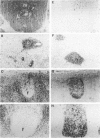Abstract
Two mouse monoclonal cytotoxic antibodies (ST-1a and ST-1b) recognize an antigen present on the large majority of thymocytes and all T cells in the periphery, but not B cells or other haemopoietic cells in sheep. Examination of frozen sections of various fetal tissues revealed that the cells expressing this antigen first appeared in the thymus, and these cells markedly increase in numbers in the peripheral lymphoid tissues after mid-gestation. Large accumulations of positive cells were located in the paracortex of lymph nodes, the periarteriolar lymphoid sheath of the spleen, and interfollicular areas of jejunal Peyer's patches, all of which are known to be T-dependent areas. Treatment of lymphocytes with ST-1a and complement resulted in the abrogation of T-proliferative responses, but the response to a B-cell mitogen, lipopolysaccharide, was not reduced. Neither ST-1a nor ST-1b cross-reacted to lymphocytes obtained from other species of animals (man, monkey, mouse, rat, guinea-pig, chicken, frog, pig, horse, goat and cattle). Based on these findings, it was concluded that the expression of the antigen recognized by ST-1a and ST-1b is restricted to the T-cell lineage of sheep, and that all ovine T cells express this antigen. Furthermore, ST-1a and ST-1b were determined to recognize the same antigen by reciprocal blocking experiments.
Full text
PDF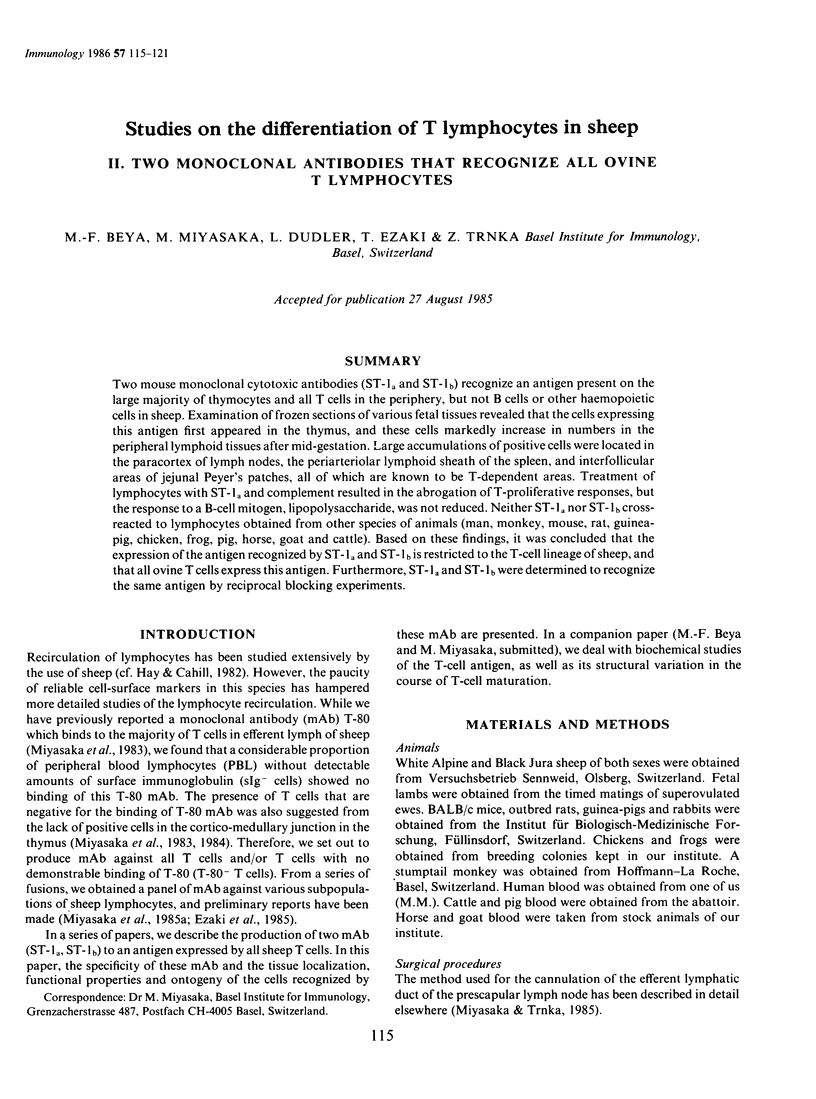
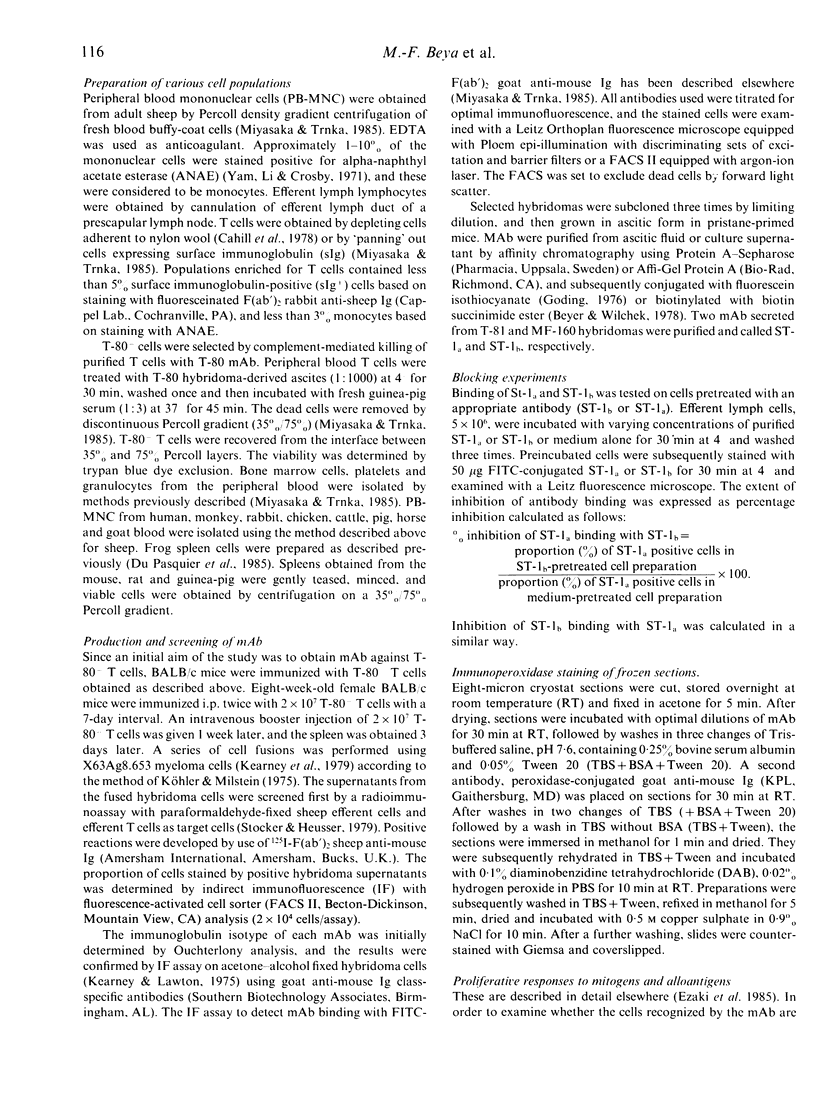
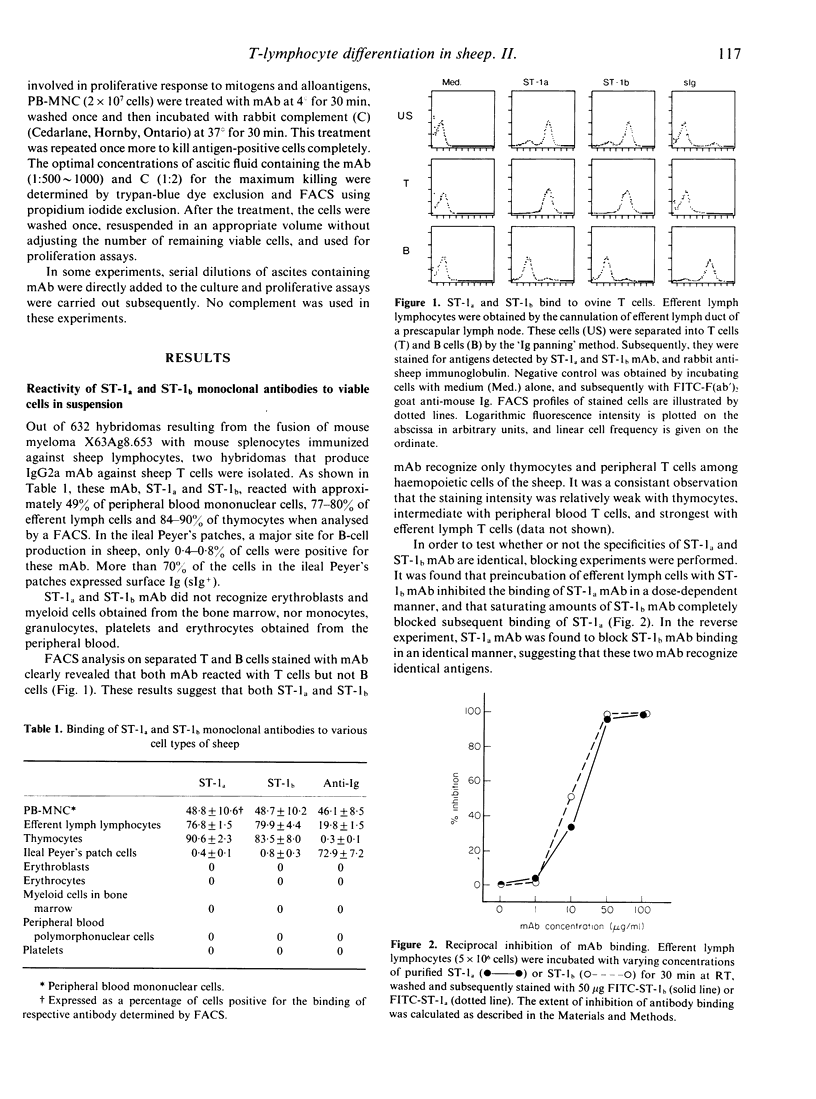
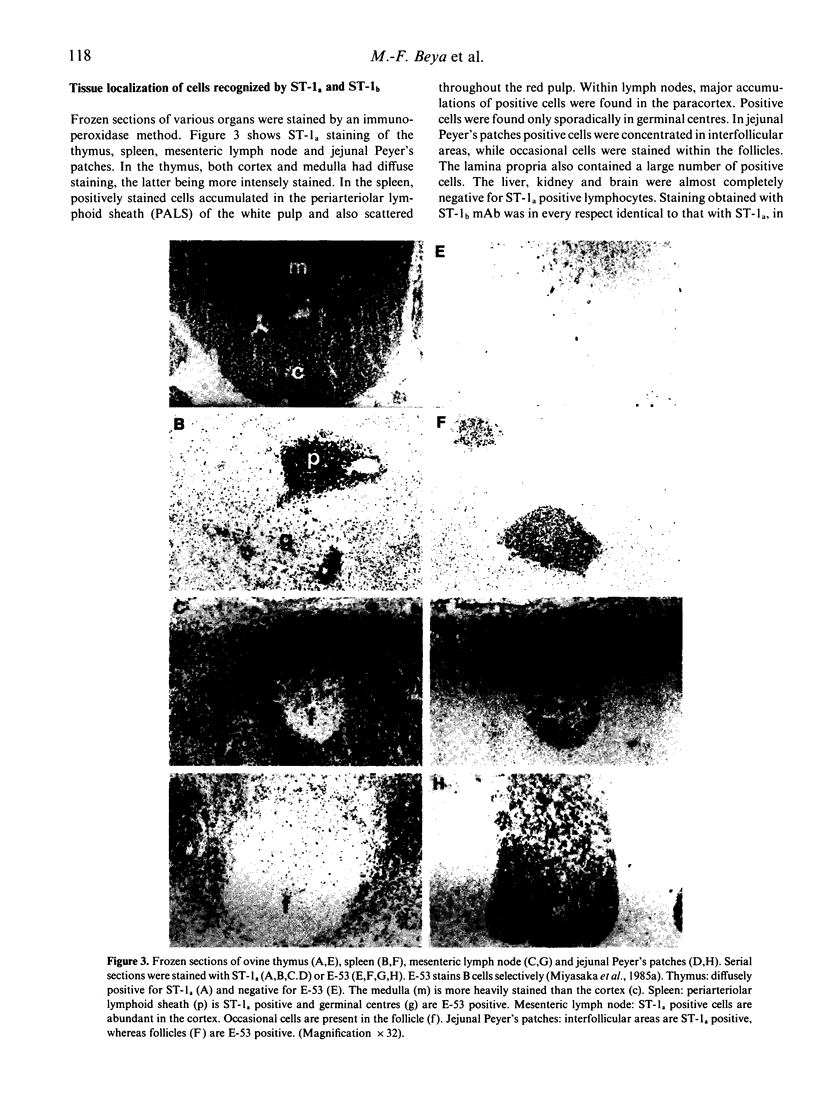
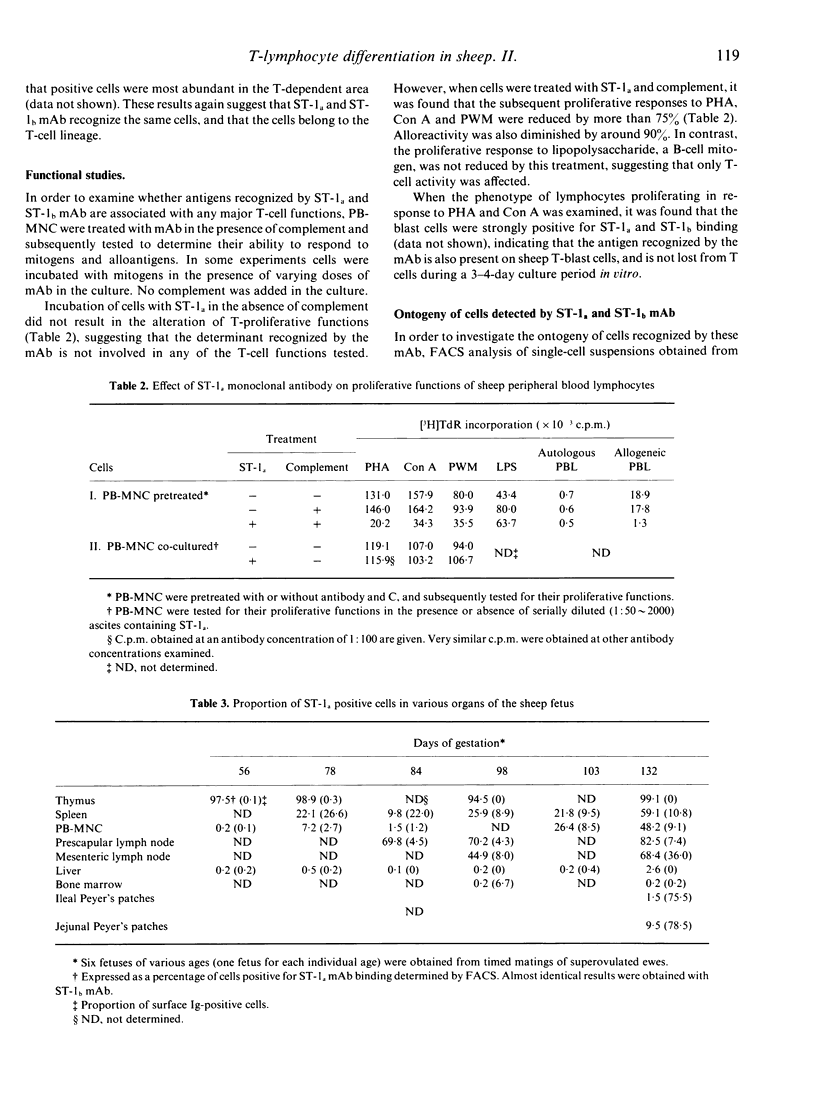
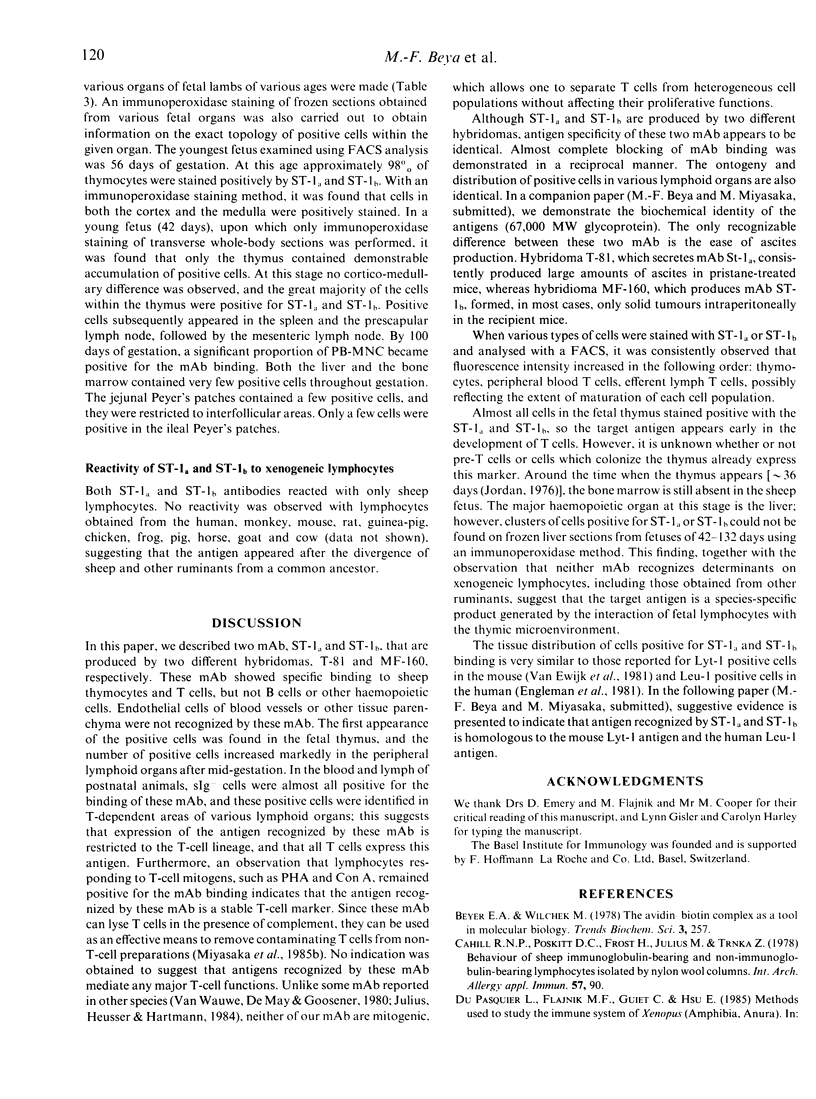
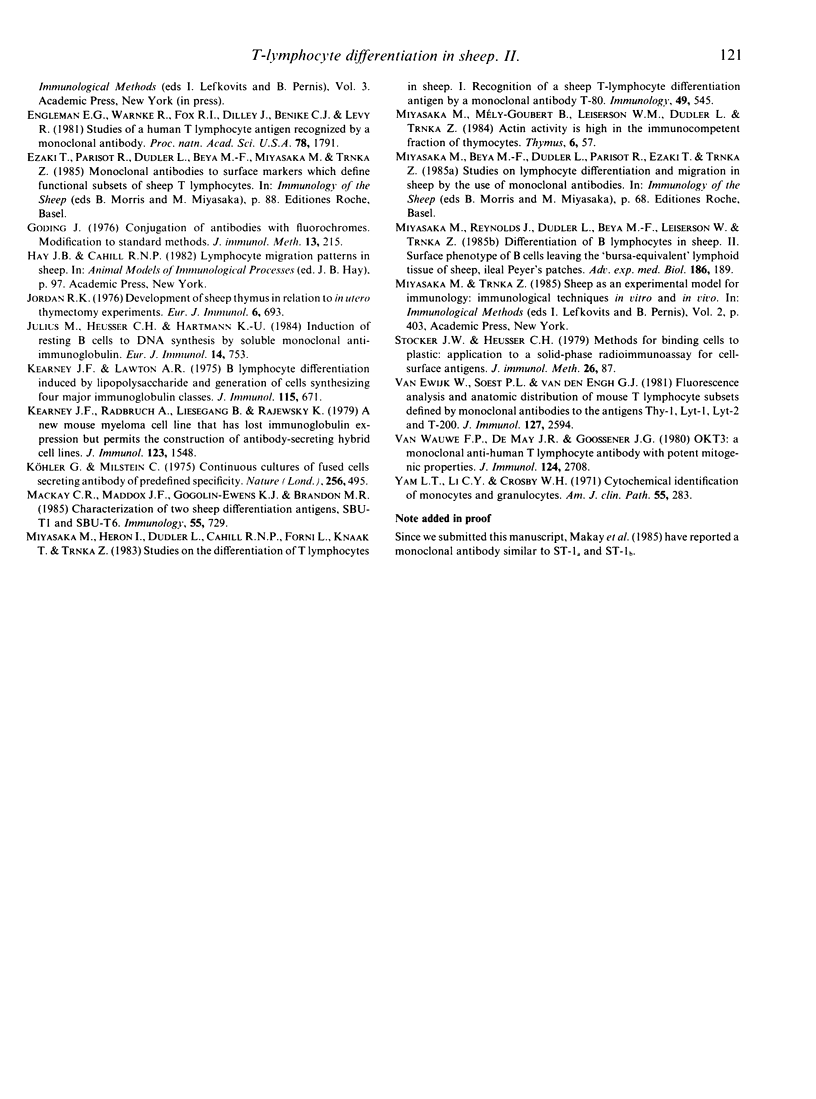
Images in this article
Selected References
These references are in PubMed. This may not be the complete list of references from this article.
- Cahill R. N., Poskitt D. C., Frost H., Julius M. H., Trnka Z. Behaviour of sheep-immunoglobulin-bearing and non-immunoglobulin-bearing lymphocytes isolated by nylon wool columns. Int Arch Allergy Appl Immunol. 1978;57(1):90–96. doi: 10.1159/000232088. [DOI] [PubMed] [Google Scholar]
- Engleman E. G., Warnke R., Fox R. I., Dilley J., Benike C. J., Levy R. Studies of a human T lymphocyte antigen recognized by a monoclonal antibody. Proc Natl Acad Sci U S A. 1981 Mar;78(3):1791–1795. doi: 10.1073/pnas.78.3.1791. [DOI] [PMC free article] [PubMed] [Google Scholar]
- Goding J. W. Conjugation of antibodies with fluorochromes: modifications to the standard methods. J Immunol Methods. 1976;13(3-4):215–226. doi: 10.1016/0022-1759(76)90068-5. [DOI] [PubMed] [Google Scholar]
- Jordan R. K. Development of sheep thymus in relation to in utero thymectomy experiments. Eur J Immunol. 1976 Oct;6(10):693–698. doi: 10.1002/eji.1830061007. [DOI] [PubMed] [Google Scholar]
- Julius M. H., Heusser C. H., Hartmann K. U. Induction of resting B cells to DNA synthesis by soluble monoclonal anti-immunoglobulin. Eur J Immunol. 1984 Aug;14(8):753–757. doi: 10.1002/eji.1830140816. [DOI] [PubMed] [Google Scholar]
- Kearney J. F., Lawton A. R. B lymphocyte differentiation induced by lipopolysaccharide. I. Generation of cells synthesizing four major immunoglobulin classes. J Immunol. 1975 Sep;115(3):671–676. [PubMed] [Google Scholar]
- Kearney J. F., Radbruch A., Liesegang B., Rajewsky K. A new mouse myeloma cell line that has lost immunoglobulin expression but permits the construction of antibody-secreting hybrid cell lines. J Immunol. 1979 Oct;123(4):1548–1550. [PubMed] [Google Scholar]
- Köhler G., Milstein C. Continuous cultures of fused cells secreting antibody of predefined specificity. Nature. 1975 Aug 7;256(5517):495–497. doi: 10.1038/256495a0. [DOI] [PubMed] [Google Scholar]
- Mackay C. R., Maddox J. F., Gogolin-Ewens K. J., Brandon M. R. Characterization of two sheep lymphocyte differentiation antigens, SBU-T1 and SBU-T6. Immunology. 1985 Aug;55(4):729–737. [PMC free article] [PubMed] [Google Scholar]
- Miyasaka M., Heron I., Dudler L., Cahill R. N., Forni L., Knaak T., Trnka Z. Studies on the differentiation of T lymphocytes in sheep. I. Recognition of a sheep T-lymphocyte differentiation antigen by a monoclonal antibody T-80. Immunology. 1983 Jul;49(3):545–553. [PMC free article] [PubMed] [Google Scholar]
- Stocker J. W., Heusser C. H. Methods for binding cells to plastic: application to a solid-phase radioimmunoassay for cell-surface antigens. J Immunol Methods. 1979;26(1):87–95. doi: 10.1016/0022-1759(79)90044-9. [DOI] [PubMed] [Google Scholar]
- Van Wauwe J. P., De Mey J. R., Goossens J. G. OKT3: a monoclonal anti-human T lymphocyte antibody with potent mitogenic properties. J Immunol. 1980 Jun;124(6):2708–2713. [PubMed] [Google Scholar]
- Yam L. T., Li C. Y., Crosby W. H. Cytochemical identification of monocytes and granulocytes. Am J Clin Pathol. 1971 Mar;55(3):283–290. doi: 10.1093/ajcp/55.3.283. [DOI] [PubMed] [Google Scholar]
- van Ewijk W., van Soest P. L., van den Engh G. J. Fluorescence analysis and anatomic distribution of mouse T lymphocyte subsets defined by monoclonal antibodies to the antigens Thy-1, Lyt-1, Lyt-2, and T-200. J Immunol. 1981 Dec;127(6):2594–2604. [PubMed] [Google Scholar]



